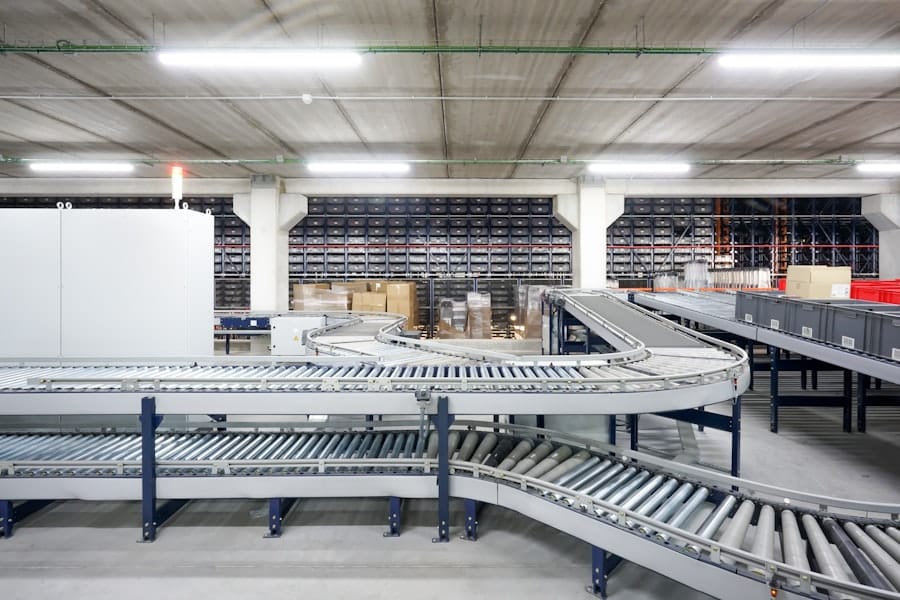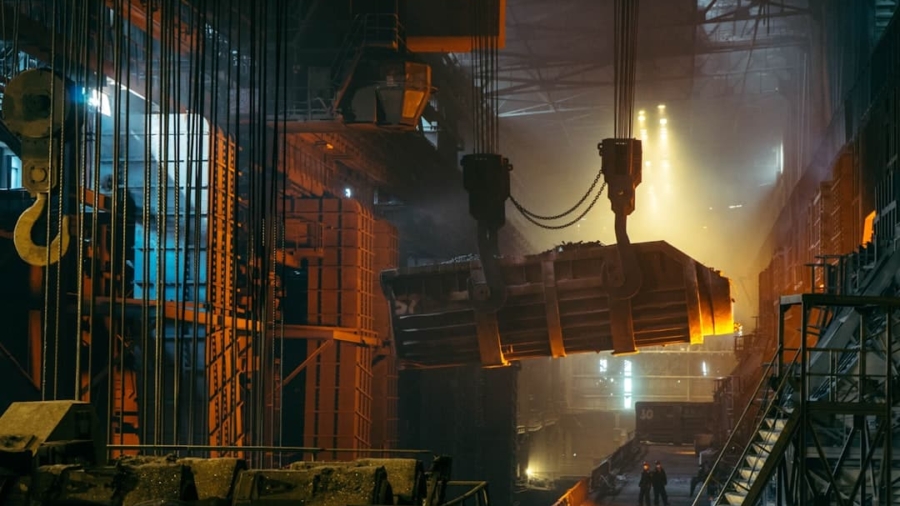The logistics industry has undergone a significant transformation in recent years, driven largely by advancements in artificial intelligence (AI). As businesses strive to enhance efficiency, reduce costs, and improve customer satisfaction, AI technologies have emerged as pivotal tools in achieving these goals. The integration of AI into logistics encompasses a wide range of applications, from autonomous robotics to predictive analytics, fundamentally reshaping how goods are transported, stored, and managed.
This evolution is not merely a trend; it represents a paradigm shift that is redefining operational capabilities and competitive dynamics within the sector. AI’s influence in logistics is multifaceted, impacting various components of the supply chain. For instance, machine learning algorithms can analyze vast datasets to identify patterns and trends that human operators might overlook.
This capability allows for more informed decision-making and strategic planning. Moreover, the rise of autonomous robotics—such as drones and automated guided vehicles (AGVs)—is revolutionizing warehouse operations and last-mile delivery. As these technologies continue to mature, they promise to enhance productivity and streamline processes, ultimately leading to a more agile and responsive logistics ecosystem.
Key Takeaways
- AI is revolutionizing the logistics industry by enabling autonomous robotics and optimizing warehouse operations.
- Autonomous robotics are impacting logistics by increasing efficiency, reducing errors, and improving safety.
- AI plays a crucial role in optimizing warehouse operations by automating inventory management and streamlining processes.
- AI contributes to route planning and optimization by analyzing data and identifying the most efficient routes for autonomous robotics.
- AI enables predictive maintenance for autonomous robotics, reducing downtime and increasing operational efficiency.
The Impact of Autonomous Robotics in Logistics
Autonomous robotics have emerged as a cornerstone of modern logistics operations, offering unprecedented levels of efficiency and precision. These robots are designed to perform tasks traditionally carried out by human workers, such as picking, packing, and transporting goods within warehouses. For example, companies like Amazon have deployed Kiva robots in their fulfillment centers, which autonomously navigate through aisles to retrieve items for orders.
This not only accelerates the order fulfillment process but also minimizes the risk of human error, leading to higher accuracy in inventory management. The impact of autonomous robotics extends beyond mere labor replacement; it also enhances safety and operational reliability. Robots can operate in environments that may be hazardous for humans, such as areas with heavy machinery or hazardous materials.
By taking on these roles, autonomous systems reduce workplace accidents and create a safer environment for human employees. Furthermore, the scalability of robotic systems allows logistics companies to adapt quickly to fluctuating demand without the need for extensive retraining or hiring processes. As a result, businesses can maintain high levels of service even during peak periods.
The Role of AI in Optimizing Warehouse Operations

AI plays a crucial role in optimizing warehouse operations by streamlining processes and improving overall efficiency. One of the primary applications of AI in this context is through predictive analytics, which enables warehouses to anticipate demand fluctuations and adjust their operations accordingly.
This capability allows warehouses to maintain optimal stock levels, reducing the risk of overstocking or stockouts. Moreover, AI-driven systems can enhance the layout and design of warehouses. By utilizing algorithms that analyze product movement patterns, logistics managers can optimize the placement of items within the warehouse.
This strategic arrangement minimizes travel time for picking operations, thereby increasing productivity.
This not only speeds up the picking process but also contributes to a more organized and efficient warehouse environment.
AI’s Contribution to Route Planning and Optimization
Route planning is another critical area where AI has made significant contributions to logistics. Traditional route planning methods often rely on static algorithms that do not account for real-time variables such as traffic conditions or weather disruptions. In contrast, AI-powered systems leverage real-time data to dynamically adjust routes based on current conditions.
This capability is particularly valuable for last-mile delivery services, where timely deliveries are essential for customer satisfaction. For example, companies like UPS have implemented AI-driven route optimization tools that analyze traffic patterns and delivery schedules to determine the most efficient routes for their drivers. By continuously updating routes based on real-time information, these systems can reduce fuel consumption and improve delivery times.
Additionally, AI can help identify potential bottlenecks in the supply chain by analyzing historical data on delivery performance. This insight allows logistics managers to proactively address issues before they escalate into significant delays.
AI’s Role in Predictive Maintenance for Autonomous Robotics
Predictive maintenance is a critical aspect of managing autonomous robotics within logistics operations. The ability to foresee potential equipment failures before they occur can significantly reduce downtime and maintenance costs. AI plays a vital role in this process by analyzing data from sensors embedded in robotic systems to monitor their performance continuously.
By identifying patterns that precede failures—such as unusual vibrations or temperature fluctuations—AI can alert operators to potential issues before they lead to breakdowns. For instance, companies like DHL have adopted predictive maintenance strategies for their fleet of autonomous robots. By utilizing machine learning algorithms that analyze historical maintenance data alongside real-time sensor readings, DHL can schedule maintenance activities at optimal times, minimizing disruptions to operations.
This proactive approach not only extends the lifespan of robotic systems but also enhances overall operational efficiency by ensuring that robots are always functioning at peak performance.
The Use of AI in Inventory Management for Autonomous Robotics

Effective inventory management is essential for any logistics operation, and AI has revolutionized this aspect by providing advanced tools for tracking and managing stock levels. Autonomous robotics equipped with AI capabilities can autonomously monitor inventory levels in real-time, ensuring that warehouses maintain optimal stock without manual intervention. This automation reduces the likelihood of human error and enhances accuracy in inventory counts.
AI-driven inventory management systems can also facilitate better decision-making regarding restocking and order fulfillment. For example, if an autonomous robot detects that certain items are running low, it can automatically trigger a reorder process based on predefined thresholds. Additionally, these systems can analyze sales trends to predict future inventory needs more accurately.
By leveraging historical data and machine learning algorithms, businesses can optimize their inventory turnover rates and reduce holding costs.
AI’s Influence on Real-time Monitoring and Decision-making for Autonomous Robotics
Real-time monitoring is a critical component of effective logistics management, particularly when it comes to autonomous robotics. AI technologies enable logistics operators to track the performance and status of robotic systems continuously. This capability allows for immediate responses to any issues that may arise during operations, ensuring that workflows remain uninterrupted.
For instance, AI-powered dashboards can provide logistics managers with real-time insights into the operational status of their robotic fleet. If a robot encounters an obstacle or experiences a malfunction, the system can alert operators instantly, allowing them to take corrective action before the issue escalates. Furthermore, AI can analyze performance metrics over time to identify trends and areas for improvement.
By leveraging this data-driven approach, logistics companies can make informed decisions that enhance operational efficiency and drive continuous improvement.
The Future of AI in Managing Autonomous Robotics in Logistics
Looking ahead, the future of AI in managing autonomous robotics within logistics appears promising and transformative. As technology continues to advance, we can expect even greater integration of AI into logistics operations. One potential development is the increased use of collaborative robots (cobots) that work alongside human employees rather than replacing them entirely.
These cobots could assist with tasks that require human judgment while taking on repetitive or physically demanding roles. Moreover, advancements in natural language processing (NLP) could enable more intuitive interactions between human operators and robotic systems. Imagine a scenario where warehouse managers can communicate with robots using voice commands or natural language queries to retrieve information or issue instructions seamlessly.
This level of interaction would enhance operational efficiency and make it easier for businesses to adapt to changing demands. As AI technologies continue to evolve, we may also see enhanced capabilities in areas such as machine vision and sensor technology. These advancements could enable autonomous robots to navigate complex environments more effectively while performing tasks with greater precision.
Ultimately, the integration of AI into logistics will not only streamline operations but also pave the way for innovative business models that leverage automation and data-driven insights to create value across the supply chain.
In a recent article discussing the role of AI in managing autonomous robotics in logistics, it is interesting to note the advancements in health management technology. According to

